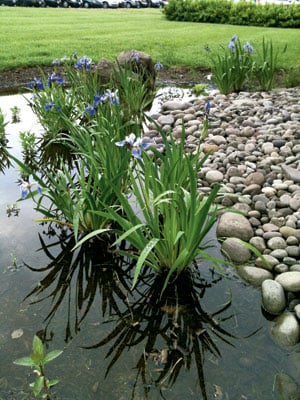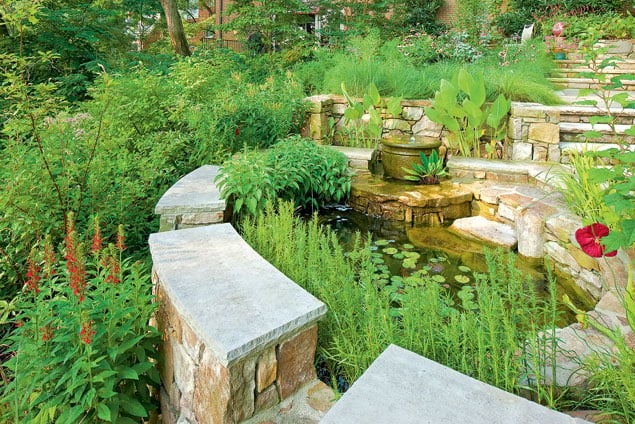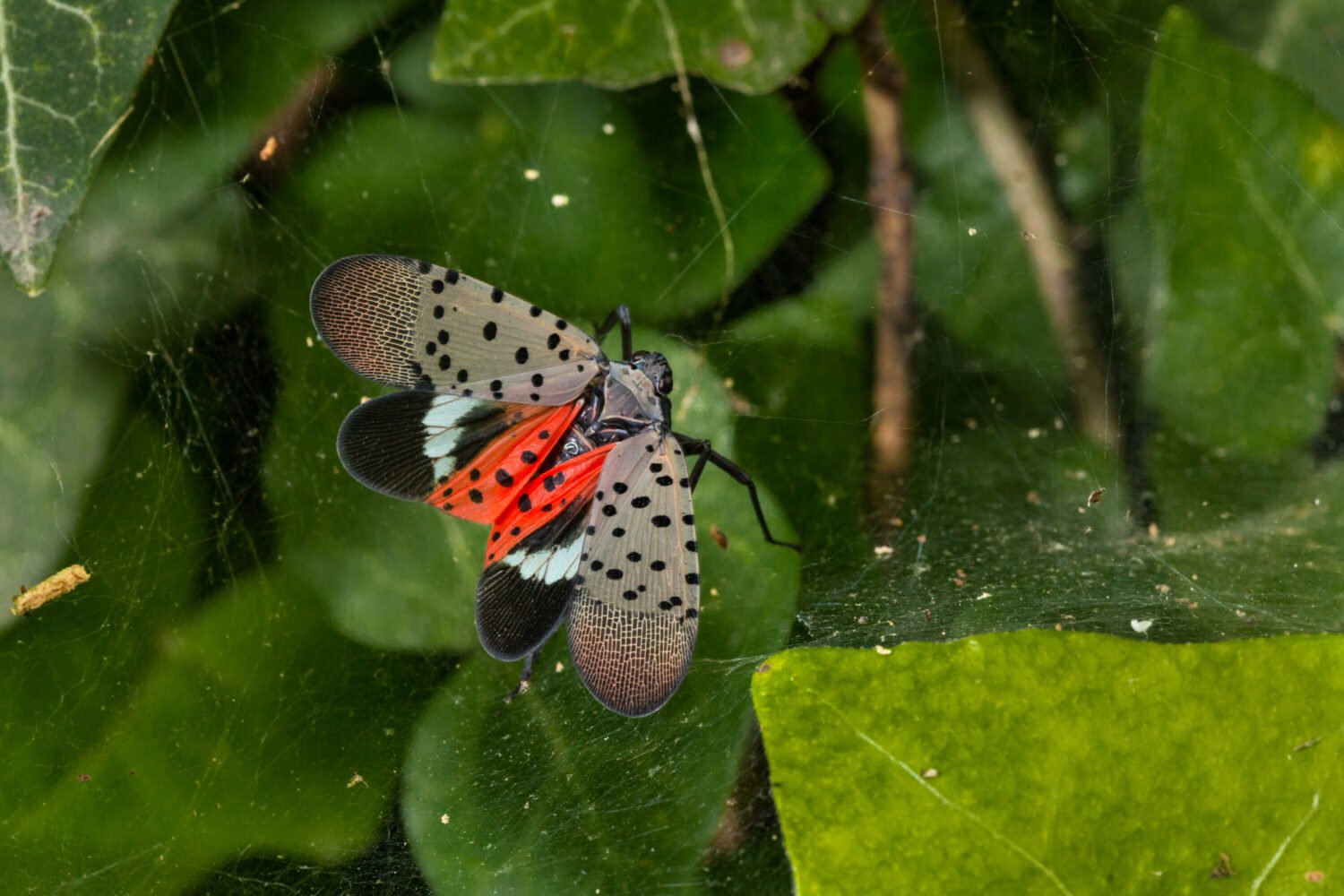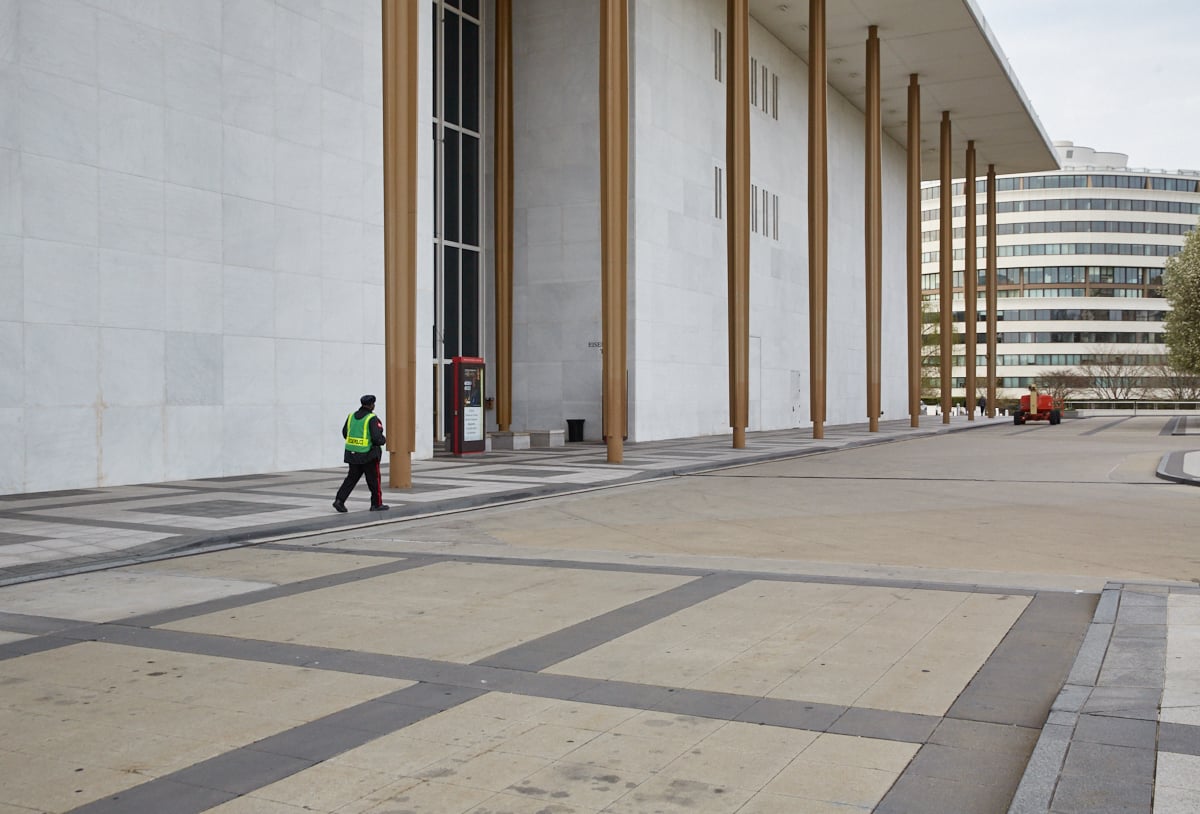A crashing thunderstorm after a brutally hot day is one of
Washington’s summertime pleasures. The rain comes down in sheets, cooling
the air and washing it clean.
But along with removing pollutants from the air, the rain
gathers up any debris on your roof, lawn chemicals and fertilizer in the
grass, antifreeze from the driveway, road salt, and dog waste. The stew
rushes through storm drains into creeks and streams, then into the Potomac
or the Anacostia River before emptying into the Chesapeake
Bay.
Gentle soaking rains nourish lawns and plants. But in
downpours–those inch-an-hour deluges–water can seep into basements, send
topsoil down the road, and make a flood where the rose garden used to be.
Downspouts, drainage pipes, and paving such as driveways all are designed
for getting the water off a property and to the storm drain. After that,
who cares?
An increasing number of soil scientists, hydrologists, and
local officials care, because of the pollutants now found in rivers,
streams, bays, and oceans, much of it contributed by private
homes.
“Once water leaves your property, hits the curb, and goes into
the storm drain,” says Anne Guillette, a landscape designer in Pasadena,
Maryland, who has much experience with storm-water issues, “there’s no
more opportunity to filter it of pollutants.”
Many organizations and local jurisdictions are now so certain
that saving the water begins at home that they’re offering substantial
subsidies or rebates–in DC and Montgomery County, up to $1,200–to
homeowners willing to make some changes in how they handle the rainwater
that falls on their property.
That’s where rain gardens come in.
What Is a Rain Garden?
The purpose of a rain garden is to collect rainwater from all
over your property–roof, downspouts, paved or impervious areas such as
driveways and patios, and even hard turf–into a strategically located,
bowl- or saucer-shaped place in your garden.
A rain garden is a spot in your yard that’s been dug out to a
depth of a few inches to a few feet, depending on the garden’s size and
the soil’s consistency, then largely refilled with good soil and mulch and
maybe stones or gravel, and finally planted with mostly native trees,
flowering plants, grasses, and shrubs. Instead of rushing into storm
drains, water collects in the rain garden and “percolates” slowly over a
day or two through soil and roots and finally, largely cleansed of
pollutants, downward to recharge ground water.
One of the miracles of science is that soil (even clay soil,
according to a US Geological Survey study) in combination with
native-plant roots is brilliant at absorbing and neutralizing
pollutants.
You can get as scientific with your rain garden as you want to
be. You can call it a “bioretention cell.” You can follow to the letter
the guidance offered in a detailed yet understandable 48-page booklet
called “Rain Gardens Across Maryland.” The booklet offers formulas for
size, soil composition, construction, planting, and maintenance, among
other things. It’s downloadable for free at rainscaping.org or
hgic.umd.edu.
What Can You Plant?

Rain gardens can be as beautiful as they are practical. You can
arrange plants as you would in any other garden: Plant in sweeps of a
single kind, and pay attention to different heights, textures, and
silhouettes.
Tom Mannion, an Arlington landscape designer, has planned
gorgeous rain gardens. One of the challenges of installing one, he says,
is integrating it into the landscape. Adjacent to one of Mannion’s rain
gardens, in place of a lawn, he designed a small “meadow” as a transition
between the rain garden and the rest of the yard.
“The meadow,” he says, “is a low-maintenance sweep of native
panicum grass and bronze fennel, which is a delicious herb for us and a
food source for butterfly caterpillars.”
Most environmental advocates suggest using native plants in a
rain garden because they’re more likely to be easy to grow and to attract
native butterflies, birds, and other wildlife. However, plenty of
nonnative plants can also work nicely–as long as, like the natives, they
can stand to be in water for a day or two and can also persevere during
times of drought, when even the rain garden dries out.
Among shrubs, you can’t beat Virginia sweetspire (Itea
virginica) in a rain garden–or any garden, for that matter. An azalea-size
deciduous shrub that grows in sun or shade, sweetspire is a graceful plant
with small but plentiful white flowers in late spring and gorgeous fall
color. You’ll find mostly the cultivar Henry’s Garnet in local
nurseries.
Slightly larger and best suited for rain-garden conditions is
the spicebush, or lindera, also with sweet-smelling white flowers and fall
color in an unusual soft orange that glows. Its color is best in full
sun.
Many viburnums are perfect for larger rain gardens. Most have
prominent berries beloved by birds. You’ll appreciate the sweet pepper
bush (Clethra alnifolia) for its late show of very fragrant, creamy white
or pinkish upright blooms and glossy leaves.
If you have room for large trees, start with the black gum
(Nyssa sylvatica), a native beloved for its ability to grow in wet areas
and for its fall color. Among small trees, the fringe tree (Chionanthus
virginicus) is tops. It has feathery blooms and large, glossy leaves,
grows to 25 feet or so, and usually has multiple trunks. Also
multiple-trunked is the river birch (Betula nigra), with flaking
cinnamon-and-white bark and a penchant for damp soil.
Among perennials, experts recommend black-eyed Susans,
sweet-flag irises, bee balm (monarda), and the majestic joe-pye weed,
which is not a weed but a five-foot beauty with purplish flowers late in
the summer when everything else has melted. Other good choices include
cardinal flower, an upright perennial with blazing red blossoms late in
the season, and foamflower (tiarella), a low-growing flowering plant with
maple-shaped leaves. Many ornamental grasses, with their mostly upright,
sometimes arching habit, are also good bets.
These are some of the highlights; you can find a comprehensive
list of other nice natives in “Rain Gardens Across Maryland.”
Are Mosquitoes an Issue?
Here are some guidelines to keep in mind when it comes to rain
gardens:
• Home rain gardens have ponding depths of five to eight
inches.
• The garden’s location will depend on where storm water flows
naturally, where you can direct it with the use of downspouts, and how
your land slopes.
• The garden’s size will depend on how ambitious you are, the
size of your lot, the amount of water you want to filter, and how much of
your land is covered with impervious material such as driveway, roof, and
patio. Most of the literature estimates 100 to 400 square feet or so for
the average rain garden, but experts say not to worry too much about size;
even a smaller garden can be beneficial.
• Rain gardens should be situated away from a house’s
foundation; experts recommend ten feet as a safe distance.
• Because the percolation of water through rain-garden soil and
roots lasts just a day or two, mosquitoes have no chance to
breed.
• Most gardeners already have some idea of the nature of their
soil and how it drains. If you’re not sure, there are ways to figure out
how well your soil percolates. To determine whether it’s mostly clay (slow
to drain) or mostly loamy or sandy (quicker), you can perform a simple
experiment: Dampen a handful of your garden soil and try to form it into a
ball. Clay easily forms a firm ball. Sandy or loamy soils tend to crumble,
and very sandy soil pours through your fingers.
• You can build a small rain garden yourself or with the help
of a few strong friends. Some landscape contractors can do the job, but
make sure they’ve done it before and know their stuff. Ask for
references.
Design Help & and Rebates
Your best bet is to get in touch with one of the environmental
organizations offering rain-garden plans, information, and, best of all,
rebates. Although not all jurisdictions offer them, many do and the rest
may soon follow.
In the District, for example, RiverSmart Homes–a program run by
the DC government in conjunction with nonprofit environmental groups and
local businesses–offers to provide up to $1,200 worth for rain-garden
installation work on your property. Montgomery County offers a similar
program. This includes site assessment, design and installation, and the
purchase of plants. It can also include turf removal, planting of shade
trees, and replacement of driveways and other impervious surfaces with
pervious materials.
To do the work, RiverSmart Homes supplies local contractors
trained in the DC Department of the Environment’s requirements. You can
also hire your own contractor.
Rebate programs are not yet offered in Northern
Virginia.
Detailed advice is all around, especially online. These
websites are particularly helpful: raingardens.org, arlingtonecho.org,
raingardennetwork.com, and montgomerycountymd.gov/rainscapes.
For those still unsure about the design and placement of a rain
garden, Maryland wetland scientist and environmental maven Spencer Rowe
may have the best advice: “The rain garden does not have to be perfect to
do its job, and it will change over time–that’s one of the things that
make it so rewarding. It’s a living dynamic system. Dig a hole, relax, and
let nature take its course. Observe and have fun.”


















